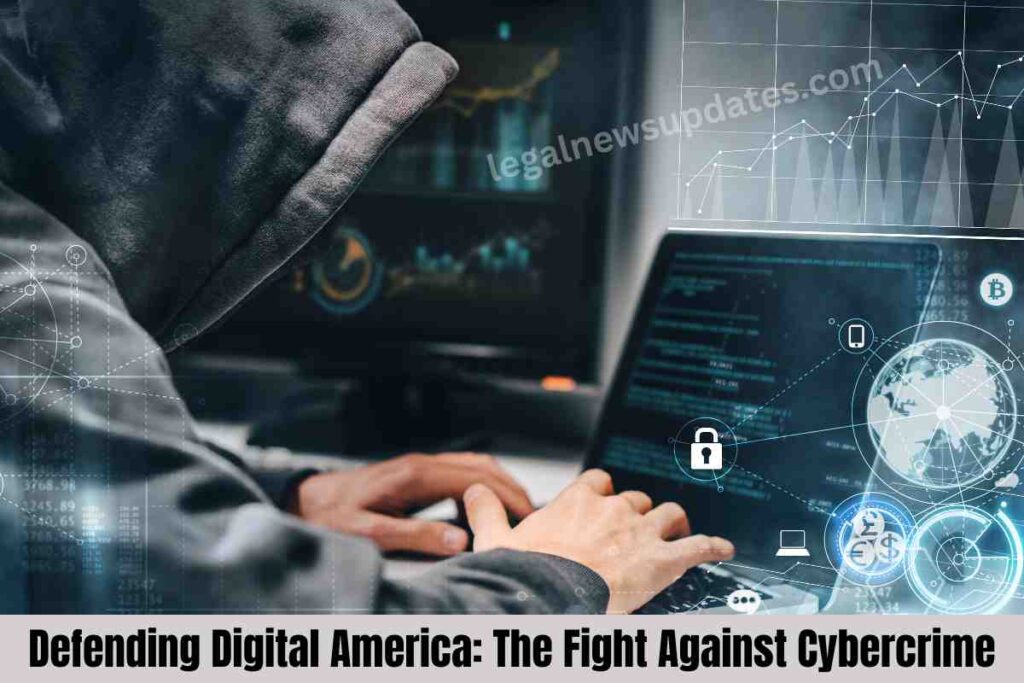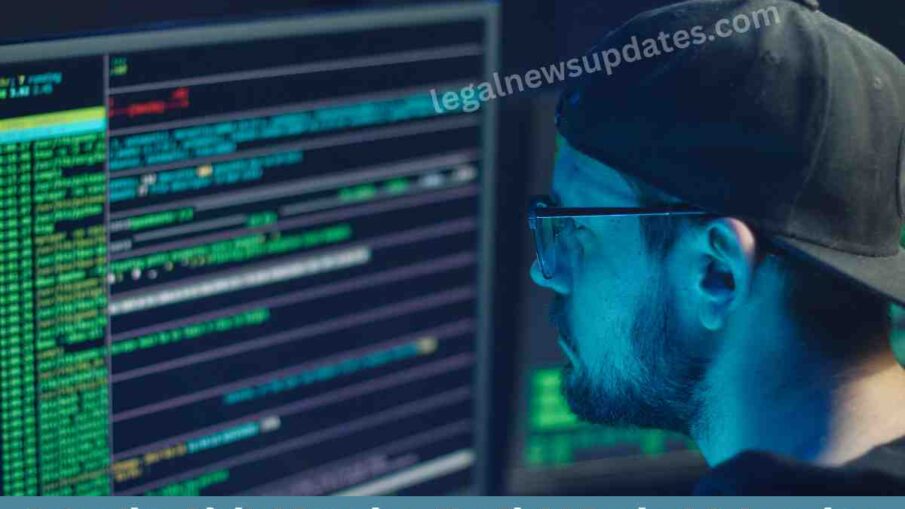Defending Digital America: The Fight Against Cybercrime

xr:d:DAGBhkiDm-0:13,j:8126043515256241233,t:24040506
Introduction About Defending Digital America: The Fight Against Cybercrime
Defending Digital America: The Fight Against Cybercrime: In the labyrinth of the digital world, cybercrime emerges as a shadowy figure, constantly evolving and finding new ways to breach the walls we build for our protection. From the simple viruses of the early internet days to sophisticated cyber-attacks that threaten national security, cybercrime has transformed, becoming an omnipresent threat to individuals, corporations, and governments alike. In the United States, the battle against this digital menace is fought on multiple fronts, involving a complex legal framework, dedicated law enforcement agencies, and an informed public vigilant against the ever-changing tactics of cybercriminals.
As we delve into cybercrime, it becomes clear that understanding its nature is only the first step. The real challenge lies in crafting and implementing adequate legal protections and actions that address today’s crimes and anticipate tomorrow’s threats. This blog aims to shed light on the multifaceted approach the USA has adopted to combat cybercrime, highlighting the legal measures in place, the role of law enforcement, and the critical importance of public awareness and individual responsibility in this ongoing battle. Join me as we explore the intricacies of defending the digital frontier, a task that requires not only the might of the law but the collective effort of every netizen.
Legal Framework Against Cybercrime in the USA
The legal battle against cybercrime in the United States is spearheaded by a robust framework. At the federal level, the cornerstone of cybercrime legislation is the Computer Fraud and Abuse Act (CFAA), which criminalizes unauthorized access to computer systems and has been amended multiple times to keep pace with the evolving digital landscape. Alongside the CFAA, the Cybersecurity Information Sharing Act (CISA) encourages the sharing of cybersecurity threat information between the government and private sectors, underpinning a collaborative approach to thwarting cyber threats.
While broadly aligning with federal guidelines, state laws introduce their nuances and specifications, creating a mosaic of regulations that reflect individual states’ unique priorities and challenges. This complexity underscores the importance of national coordination and the need for clarity in legal standards to effectively combat cybercrime across state lines.
Given the borderless nature of cyber threats, international cooperation plays a critical role in this arena. The U.S. actively participates in global cybercrime conventions and works with international law enforcement agencies to trace, tackle, and extradite cybercriminals, reflecting the global scale of the fight against cybercrime.
Law Enforcement and Cybercrime: Defending Digital America: The Fight Against Cybercrime
Federal, state, and local law enforcement agencies play pivotal roles in the U.S. strategy against cybercrime. The Federal Bureau of Investigation (FBI)’s Cyber Division leads the charge, focusing on cyber threats. The Department of Homeland Security (DHS) and the National Security Agency (NSA) also contribute critical expertise and resources. Highlighting the collaborative effort required to address cyber threats effectively.
One of the primary challenges facing law enforcement is the sophistication and evolving nature of cybercrime tactics. Cybercriminals continually adapt, employing advanced technologies and methodologies to evade detection. This dynamic landscape demands constant vigilance and adaptation from law enforcement, including ongoing training and investment in cutting-edge technology.
Preventive Measures and Public Awareness
Prevention and education are critical components of the U.S. approach to combating cybercrime. For individuals, practicing cyber hygiene—such as using strong, unique passwords, enabling two-factor authentication, and being vigilant about phishing attempts—is fundamental to protecting personal information and reducing vulnerability to cyber attacks.
Businesses, particularly those holding sensitive customer data or integral to national infrastructure, are encouraged to implement robust cybersecurity measures, conduct regular security assessments, and foster a culture of security awareness among their employees. Government initiatives to raise public awareness about cyber risks and protective measures are crucial in building a resilient and informed digital citizenry.
Emerging Trends in Cybercrime and Legal Responses
As technology advances, so too do the methods employed by cybercriminals. Artificial Intelligence (AI), the Internet of Things (IoT), and other emerging technologies offer new avenues for cyber attacks, necessitating preemptive legal and security measures. Recognizing these threats, U.S. lawmakers and enforcement agencies are working on updating legal frameworks and developing new strategies for cyber defense.
The legal responses to these emerging threats must balance the need for security with respect for privacy and civil liberties. This delicate balance underscores the complexity of crafting laws that effectively combat cybercrime and protect fundamental rights.
Conclusion Defending Digital America: The Fight Against Cybercrime
The fight against cybercrime in the USA exemplifies the need for a multifaceted approach. That combines robust legal frameworks, proactive law enforcement, public awareness, and international cooperation. As cybercriminals continue to evolve, so too must our strategies and defenses. It is a perpetual game of cat and mouse with increasingly high stakes. Yet, through collective effort and resilience, we can safeguard our digital lives and preserve the integrity of our cyberspace.











1 thought on “Defending Digital America: The Fight Against Cybercrime”